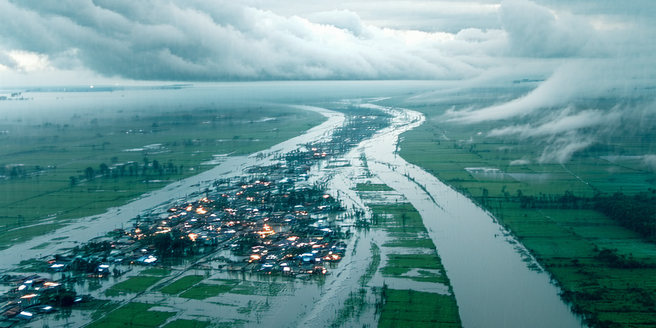
Understanding the Basics of Weather Patterns
Weather patterns are influenced by various atmospheric phenomena, including air pressure, temperature, and humidity. The movement of air masses, the rotation of the Earth, and ocean currents collectively shape the climate of a region, affecting its weather conditions. By understanding these patterns, we can predict the general behavior of weather over time. Meteorologists utilize satellite imagery and predictive models to forecast weather, helping societies prepare for potential impacts. Weather patterns are not static; they evolve with the Earth’s changing climate conditions, leading to increasingly erratic weather events. Accurate understanding of these patterns is essential for agriculture, navigation, and daily life planning. Knowledge of how weather patterns operate can also prepare us for the severe weather events induced by changes in global climate systems.
The Role of Climate Change in Increasing Flood Risks
Climate change plays a significant role in altering weather systems, thereby increasing the frequency and intensity of flood events. Warmer temperatures lead to accelerated ice melt, raising sea levels and disrupting traditional water cycles. Additionally, climate change intensifies rainfall patterns, as a warmer atmosphere can hold more moisture. This results in heavy downpours and prolonged storms, exacerbating flood risks in vulnerable regions. Public awareness and education about these issues are vital for fostering community resilience and preparedness. Longer dry spells followed by intense rainfall can overwhelm drainage systems, leading to flash floods. Understanding the link between climate change and floods is crucial for developing strategies to mitigate impacts. Policymakers and scientists advocate for reducing carbon emissions and investing in sustainable infrastructure to combat these heightened risks.
How Atmospheric Conditions Influence Flood Events
Atmospheric conditions, such as prolonged rainfall, high humidity, and temperature fluctuations, significantly impact flood events. When warm, moist air rises and cools, it leads to cloud formation and precipitation. The rapid cooling of the air can further intensify these weather patterns. If this process occurs continuously, it can result in substantial rainfall over a short period, increasing flood risk. Similarly, the interaction between high-pressure and low-pressure systems can cause natural barriers trapping moisture and resulting in heavy rainfall. Thunderstorms and cyclones, driven by atmospheric pressure changes, can also cause floods. Moreover, the saturation of soil reduces its absorption capacity, increasing surface runoff and flood potential. Therefore, monitoring atmospheric conditions is vital for predicting floods and implementing timely interventions to mitigate disaster impacts.
Case Studies: Historical Floods and Their Causes
Examining historical flood events reveals the diverse causes and impacts of these disasters. The Great Flood of 1993 in the United States, triggered by persistent heavy rainfall and snowmelt, affected multiple states. Similarly, the 2010 Pakistan flood, caused by the monsoon’s intensified rainfall, displaced millions. Each event highlights the role of natural and anthropogenic factors in flood genesis. Urbanization and deforestation exacerbate flood risks by altering natural drainage and reducing the land’s absorptive capacity. In many regions, outdated infrastructure further compounds the challenge of managing floodwaters. Lessons from these events emphasize the importance of adopting proactive measures such as improved watershed management and floodplain restoration. Early warning systems and community preparedness are crucial for minimizing loss and improving resilience against future floods.
Predictive Technologies and Future Flood Prevention
Advancements in predictive technologies are crucial for future flood prevention and management efforts. Remote sensing and satellite imagery enable real-time monitoring of weather conditions, providing early warnings of impending floods. Predictive models using artificial intelligence and machine learning analyze historical data to forecast flood events with greater accuracy. These technologies assist in decision-making and allow for timely evacuation and resource allocation. Furthermore, smart infrastructure, including adaptable drainage systems and flood barriers, are being developed to enhance urban resilience. Governments and stakeholders are investing in community-based programs to educate and build capacity for flood risk reduction. As technology progresses, a combination of traditional knowledge and innovation will be key to safeguarding communities from the increasing threat of floods.
